These Asian Americans and Pacific Islanders made history while living and working in California
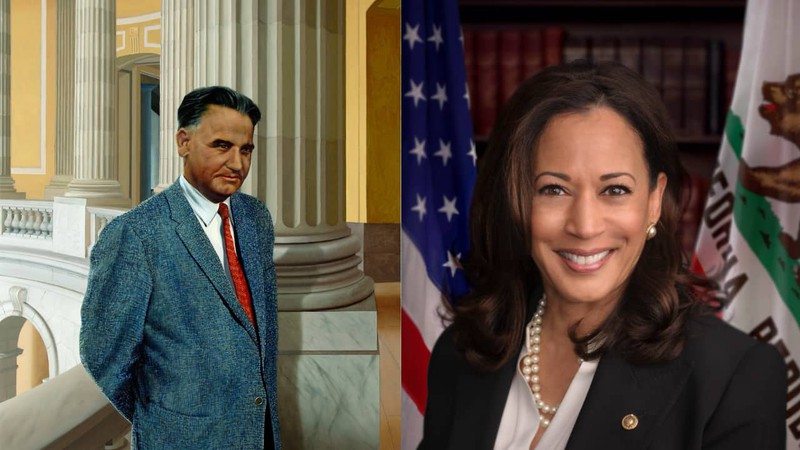
Dalip Singh Saund, the first Sikh, Indian American and Asian American to be elected to Congress and Kamala Harris, the first Asian American vice president. United States Congress Public Domain
By JIANNA CHOI
California is the most diverse state in the US, and the state with the highest Asian American population in the nation, at nearly 6 million. The state has been the birthplace and home of several Asian American and Pacific Islanders who have transcended barriers and reshaped society, from education to advocacy, art to sports, politics, and beyond. These trailblazers have contributed significantly to their respective fields, but many have gone underrecognized. In homage to their extraordinary legacy, below is a list of 25 AAPI Californians whose contributions have left an enduring imprint on the world stage.
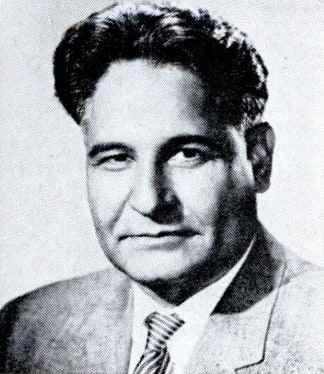 Dalip Singh Saund was the first Sikh, Indian American and Asian American to be elected to Congress. After attending the University of Punjab for a Bachelor of Science in mathematics, Saund immigrated to the United States. He went on to acquire a Master of Arts and Ph.D. at UC Berkeley. In 1930 he published My Mother India, and in 1942 he became the first president of the Indian Association of America. The organization’s efforts led to the passage of the Luce–Celler Act in 1946, which allowed Saund to become a US citizen three years later. In 1952 Saund became Justice of the Peace of Westmoreland, in California's Imperial County, and was the only Indian in office in the US at the time. Four years later in the 1956 election, Saund ran for Congress in California’s 29th congressional district, won, and retained his position until 1963.
Dalip Singh Saund was the first Sikh, Indian American and Asian American to be elected to Congress. After attending the University of Punjab for a Bachelor of Science in mathematics, Saund immigrated to the United States. He went on to acquire a Master of Arts and Ph.D. at UC Berkeley. In 1930 he published My Mother India, and in 1942 he became the first president of the Indian Association of America. The organization’s efforts led to the passage of the Luce–Celler Act in 1946, which allowed Saund to become a US citizen three years later. In 1952 Saund became Justice of the Peace of Westmoreland, in California's Imperial County, and was the only Indian in office in the US at the time. Four years later in the 1956 election, Saund ran for Congress in California’s 29th congressional district, won, and retained his position until 1963.
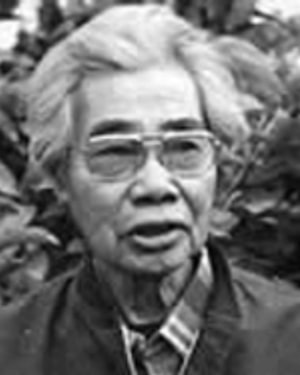 Philip Vera Cruz, a Filipino American labor organizer and civil rights leader, played a pivotal role in advocating for workers’ rights and shedding light on the Filipino immigrant experience during the late 19th and early 20th centuries. Having migrated from the Philippines to the United States in pursuit of a better life, many encountered systemic discrimination, limited job opportunities, and exploitative working conditions. Vera Cruz himself arrived in the U.S. at the age of 22, undertaking various jobs in canneries, factories, and restaurants before settling in California, where he became a farmworker. It was his firsthand experiences in the fields that ignited his passion for labor activism. In the 1950s, he joined the National Farm Labor Union and played a crucial role in establishing the United Farm Workers union in 1962, eventually serving as its second vice-president. Through his tireless advocacy and leadership, Vera Cruz became a beacon of hope for marginalized workers, amplifying their voices and championing their rights in the face of adversity.
Philip Vera Cruz, a Filipino American labor organizer and civil rights leader, played a pivotal role in advocating for workers’ rights and shedding light on the Filipino immigrant experience during the late 19th and early 20th centuries. Having migrated from the Philippines to the United States in pursuit of a better life, many encountered systemic discrimination, limited job opportunities, and exploitative working conditions. Vera Cruz himself arrived in the U.S. at the age of 22, undertaking various jobs in canneries, factories, and restaurants before settling in California, where he became a farmworker. It was his firsthand experiences in the fields that ignited his passion for labor activism. In the 1950s, he joined the National Farm Labor Union and played a crucial role in establishing the United Farm Workers union in 1962, eventually serving as its second vice-president. Through his tireless advocacy and leadership, Vera Cruz became a beacon of hope for marginalized workers, amplifying their voices and championing their rights in the face of adversity.
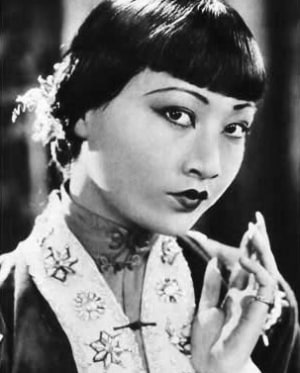 Wong Liu Tsong, better known as Anna May Wong, was the first Chinese-American actress to both star in a Hollywood film and gain international esteem. Wong was born in Los Angeles, the second of eight children. From a young age Wong became fascinated with movies, often visiting movie sets or skipping school to watch films. She resolved to be a movie star and came up with the name Anna May Wong at age 11. At the age of 14, Wong auditioned to be an extra in The Red Lantern and continued working as an extra while also attending school. In 1921 Wong dropped out of her high school to pursue a full time acting career. At 17 she landed a leading role in Technicolor’s first feature length film, The Toll of the Sea, and continued to gain popularity. But working in the movie industry in the US as an Asian American actress was not easy: Wong faced discrimination, was constantly asked to play stereotypical supporting characters, and was restricted by anti-miscegenation rules. Wong eventually decided to move to Europe where she quickly became a sensation for her brilliant performances in several films. In 1930, Paramount Studios offered her a contract and promised her more leading roles. She accepted, and after returning to the US, she starred in several more films, including Shanghai Express. Wong was also the leading character in The Gallery of Madame Liu-Tsong, the first American TV series featuring an Asian American.
Wong Liu Tsong, better known as Anna May Wong, was the first Chinese-American actress to both star in a Hollywood film and gain international esteem. Wong was born in Los Angeles, the second of eight children. From a young age Wong became fascinated with movies, often visiting movie sets or skipping school to watch films. She resolved to be a movie star and came up with the name Anna May Wong at age 11. At the age of 14, Wong auditioned to be an extra in The Red Lantern and continued working as an extra while also attending school. In 1921 Wong dropped out of her high school to pursue a full time acting career. At 17 she landed a leading role in Technicolor’s first feature length film, The Toll of the Sea, and continued to gain popularity. But working in the movie industry in the US as an Asian American actress was not easy: Wong faced discrimination, was constantly asked to play stereotypical supporting characters, and was restricted by anti-miscegenation rules. Wong eventually decided to move to Europe where she quickly became a sensation for her brilliant performances in several films. In 1930, Paramount Studios offered her a contract and promised her more leading roles. She accepted, and after returning to the US, she starred in several more films, including Shanghai Express. Wong was also the leading character in The Gallery of Madame Liu-Tsong, the first American TV series featuring an Asian American.
Tyrus Wong was one of the most influential Asian American artists of the 20th century, producing set designs, storyboards, and cards for Disney, Warner Bros, and Hallmark. He was also active in other artforms including calligraphy, kite making, ceramics, and mural painting. Wong was born in Toisan, Kwangtung, China, and at age nine moved with his father to California, where he was first held at Angel Island. Upon release, he and his father lived in Sacramento and later moved to Los Angeles. Most notably, Wong’s pastel art (which was influenced by the Song Dynasty’s art), inspired Bambi, for which he was the lead artist. After finishing this project he worked at Warner Bros for 26 years as a production illustrator. Among other honors and awards, Wong’s name has been inducted into both the Disney Legends Hall of Fame Induction and the Art Director’s Guild Hall of Fame.
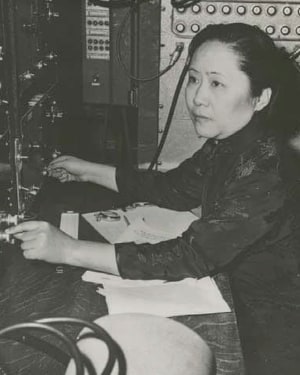 Widely known as the “first lady of physics,” Chien-Shiung Wu was a Chinese-American experimental physicist and academic. After graduating at the top of her class at Nanjing University, she moved to the United States to continue her education. In 1940, Dr. Wu graduated from UC Berkeley with a PhD in physics. In subsequent years she joined Princeton as the first woman faculty member in its physics department, and later taught at Columbia University—taking a hiatus to join the Manhattan Project during World War II. After the war, Dr. Wu returned to Columbia where she became a full time professor and made a number of major discoveries in the fields of particle and nuclear physics. Her two male colleagues received a Nobel Prize in Physics for work thery did together, but due to widespread sexism at the time, Dr. Wu was not. Regardless, for the rest of her career, Wu continued to conduct groundbreaking work. She was the seventh woman elected to the National Academy of Sciences, the recipient of the Comstock Prize in Physics given by the National Academy of Sciences, the first woman to be president of the American Physical Society, the first person to receive the Wolf Prize in Physics, and the first woman to receive an honorary doctorate by Princeton. She also has an asteroid, 2752 Wu Chien-Shiung, named after her.
Widely known as the “first lady of physics,” Chien-Shiung Wu was a Chinese-American experimental physicist and academic. After graduating at the top of her class at Nanjing University, she moved to the United States to continue her education. In 1940, Dr. Wu graduated from UC Berkeley with a PhD in physics. In subsequent years she joined Princeton as the first woman faculty member in its physics department, and later taught at Columbia University—taking a hiatus to join the Manhattan Project during World War II. After the war, Dr. Wu returned to Columbia where she became a full time professor and made a number of major discoveries in the fields of particle and nuclear physics. Her two male colleagues received a Nobel Prize in Physics for work thery did together, but due to widespread sexism at the time, Dr. Wu was not. Regardless, for the rest of her career, Wu continued to conduct groundbreaking work. She was the seventh woman elected to the National Academy of Sciences, the recipient of the Comstock Prize in Physics given by the National Academy of Sciences, the first woman to be president of the American Physical Society, the first person to receive the Wolf Prize in Physics, and the first woman to receive an honorary doctorate by Princeton. She also has an asteroid, 2752 Wu Chien-Shiung, named after her.
Modesto “Larry” Dulay Itliong was a prominent Filipino-American civil rights activist, labor organizer, and leader. Born in San Nicolas, Pangasinan, Philippines, Itliong immigrated to the US when he was 15. Unable to continue his education and limited by barriers against Filipinos, Itliong worked as a farmer. In 1933, he mobilized farmworkers in California’s Salinas Valley to go on strike. Itliong also co-founded the Alaska Cannery Workers Union which fought for eight-hour work days with overtime. It was here that an accident caused him to lose three fingers, earning him the nickname “Seven Fingers.” During World War II, Itliong served on a US Army transport ship as a steward, and after the war ended, he resumed activism in Stockton, becoming secretary of the Filipino Community of Stockton, founding the Stockton Filipino Farm Labor Union, and eventually being elected president of the Stockton Filipino Voters League. Itliong also led the Agricultural Workers Organizing Committee, which partnered with Cesar Chavezs’ National Farm Workers Association to launch the 1965–1966 grape strike and boycott. Itliong is now known as one of the fathers of the West Coast labor movement, and in 2015, Gov. Jerry Brown designated Oct. 25 as Larry Itliong Day in California.
Born in Oakland, California, Fred Toyosaburo Korematsu was a lifelong civil rights activist. In 1942, after the bombing of Pearl Harbor, Pres. Franklin D. Roosevelt signed Executive Order 9066, allowing the military to forcefully relocate Japanese Americans to internment camps. Korematsu refused to follow orders and ran away, but was eventually arrested and sent to the Presidio Stockade in San Francisco. There he met Ernest Besig, an attorney with the American Civil Liberties Union, who offered to help Korematsu dispute the arrest. Shortly after, Korematsu was transferred to Tanforan Racetrack, the camp where his family was held in. In 1944 Korematsu successfully applied to leave the internment camp, and by that time his case was working its way to the Supreme Court. On Oct. 11, 1944, the Court heard Korematsu vs. The United States, and upheld Korematsu’s conviction. In December 1981, nearly 40 years later, Korematsu reopened the case after being made aware of prior government falsification of information. In 1983, US District Court Judge Marilyn Pate cleared Korematsu’s federal record. Korematsu continued his activism; for example, he advocated for the Civil Liberties Act of 1988, which granted financial compensation and a presidential apology to Japanese Americans. Korematsu was awarded the Presidential Medal of Freedom in 1988. His birthday, Jan. 30, is Fred Korematsu Day in California.
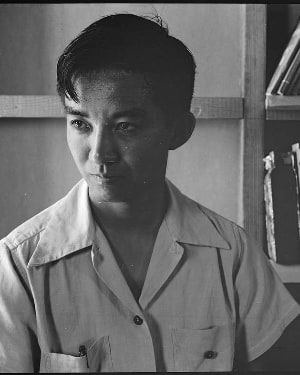 Harvey Akio Itano was a Japanese-American biochemist born in Sacramento, California. He is best known for his work on sickle-cell anemia, where he used electrophoresis to distinguish between normal and sickle cell hemoglobin. Sickle cell anemia currently affects approximately 100,000 people in the United States, and 10% of the population is at risk for it, highlighting the importance of Itano’s discovery. Itano attended UC Berkeley in 1942, where he had the highest GPA in his graduating class as a chemistry major but was unable to attend his graduation because he and his family were being held at a Japanese internment camp. Fortunately, Itano was one of the first to be released early so he could obtain his medical degree at St. Louis University. In 1979, Itano became the first Japanese American to be elected as a member of the US National Academy of Sciences, and also served as a Distinguished Research Professor of Pathology at UC San Diego and chair of their pathology department.
Harvey Akio Itano was a Japanese-American biochemist born in Sacramento, California. He is best known for his work on sickle-cell anemia, where he used electrophoresis to distinguish between normal and sickle cell hemoglobin. Sickle cell anemia currently affects approximately 100,000 people in the United States, and 10% of the population is at risk for it, highlighting the importance of Itano’s discovery. Itano attended UC Berkeley in 1942, where he had the highest GPA in his graduating class as a chemistry major but was unable to attend his graduation because he and his family were being held at a Japanese internment camp. Fortunately, Itano was one of the first to be released early so he could obtain his medical degree at St. Louis University. In 1979, Itano became the first Japanese American to be elected as a member of the US National Academy of Sciences, and also served as a Distinguished Research Professor of Pathology at UC San Diego and chair of their pathology department.
Sammy Lee was an American diver and physician born to parents of Korean descent in Fresno, California. Lee was the first Asian American man to win Olympic gold for the United States, the second Asian American man overall to win gold, and the first man to win two consecutive gold medals in diving. At a young age, Lee was barred from practicing at the public pool near his house because of discriminatory policies against Asians and Latinos, so he practiced in a sandpit in his backyard. Lee went on to become an athlete at Occidental, received an MD from USC, then joined the Army reserves. In 1942 Lee won the United States National Diving Championships in the 3-meter springboard and the 10-meter platform events. He won gold once again in 1946 in the 10-meter event at the San Diego national diving competition. He continued on to win gold in the 10-meter at the 1948 Summer Olympics, and then again at the 1952 Finland Olympics. After his career as an athlete, Lee served in the U.S. Army Medical Corps in South Korea, practiced as an ENT doctor, and coached several Olympic divers to success.
At the 1948 Olympic games, Vicki Draves became the first American woman to win Olympic gold medals in both platform and springboard diving. Draves grew up in San Francisco during WWII and faced discrimination due to her father’s Filipino last name. Upon graduating from Commerce High School in 1942, she took a temporary civil service job in the Army Port Surgeon’s office. Before winning her gold medals in 1948, Draves won five US diving championships. In 1969 she was inducted into the Swimming Hall of Fame.
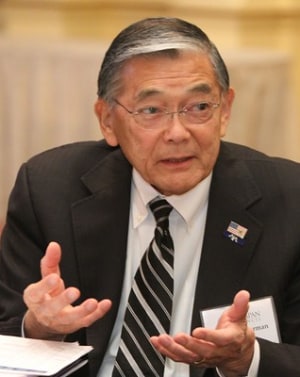 Norman Mineta was an American politician and the first East Asian to serve as a White House cabinet secretary. Mineta was born to Japanese parents in San Jose. His family was interned at a camp in Wyoming during World War II. In 1953 he graduated from UC Berkeley with a degree in business administration, then joined the US Army as an intelligence officer in Japan and Korea. In 1967, Mineta was appointed to San Jose’s city council by the mayor. Four years later, Mineta himself became the 59th mayor of San Jose and the first Japanese-American mayor of a major American city. In 1974 Mineta ran for Congress in what was then California’s 13th congressional district and stayed in office until 1995. Among other achievements, Mineta co-founded the Congressional Asian Pacific American Caucus and was its first chair, served as the House Committee on Transportation and Infrastructure, and was instrumental in pushing the Civil Liberties Act of 1988 through the House. In 2000, Mineta became the first Asian American to hold a presidential cabinet post when Pres. Bill Clinton nominated him to serve as the U.S. Secretary of Commerce. Then in 2001, President George W. Bush appointed him to serve as US Secretary of Transportation, which made Mineta the first Asian American to hold that position.
Norman Mineta was an American politician and the first East Asian to serve as a White House cabinet secretary. Mineta was born to Japanese parents in San Jose. His family was interned at a camp in Wyoming during World War II. In 1953 he graduated from UC Berkeley with a degree in business administration, then joined the US Army as an intelligence officer in Japan and Korea. In 1967, Mineta was appointed to San Jose’s city council by the mayor. Four years later, Mineta himself became the 59th mayor of San Jose and the first Japanese-American mayor of a major American city. In 1974 Mineta ran for Congress in what was then California’s 13th congressional district and stayed in office until 1995. Among other achievements, Mineta co-founded the Congressional Asian Pacific American Caucus and was its first chair, served as the House Committee on Transportation and Infrastructure, and was instrumental in pushing the Civil Liberties Act of 1988 through the House. In 2000, Mineta became the first Asian American to hold a presidential cabinet post when Pres. Bill Clinton nominated him to serve as the U.S. Secretary of Commerce. Then in 2001, President George W. Bush appointed him to serve as US Secretary of Transportation, which made Mineta the first Asian American to hold that position.
Yuji Ichioka, scholar, activist, and historian, was born in San Francisco in 1936. As a child, Ichioka and his family were interned at Topaz War Relocation Center in Utah, before Ichioka returned to San Francisco to resume his education. Ichioka served in the military for three years then attended UCLA, where he obtained a history degree. In 1968 he also completed an MA in Asian studies at UC Berkeley. While there, Ichioka founded the Asian American Political Alliance and coined the term “Asian American,” along with his wife Emma Gee. The term was meant to unify the Asian ethnicities in a time where Asians faced constant racism and were often referred to as “Asianic” or “Oriental.” Ichioka went on to teach the first-ever Asian American Studies class at UCLA and was offered an associate director’s position at the university’s newly formed Asian American Studies Center. He continued to conduct research under this department as a professor until 2002. Ichioka faced discrimination from other immigration historians, but it did not stop him from contributing tirelessly to the field’s research. In 1989 his work The Issei: The World of the First Generation Japanese Immigrants, 1885–1924 won the U.S. History Book Award of the National Association for Asian American Studies.
Ronald Takaki was an academic, historian, and author, born in Honolulu to two Japanese immigrants. After obtaining his bachelor’s degree from the College of Wooster in Ohio, and his master’s and PhD from UC Berkeley, he taught the first Black history course at UCLA. In 1971 he accepted a position at UC Berkeley and taught as the Department of Ethnic Studies’ first full-time professor. There Takaki spearheaded Berkeley’s undergraduate ethnic studies major and established the nation’s first ethnic studies PhD program.
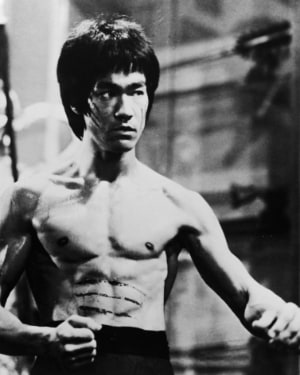 When people hear the phrase “martial arts star,” most will immediately think of the household name Bruce Lee, a Hong Kong American martial artist and actor. Lee was born in San Francisco and was introduced to various forms of martial arts including Wing Chun, tai chi, boxing, and street fighting, early on in life. Transitioning from student to teacher, Lee established martial arts schools in Seattle and later in Oakland, where he imparted his knowledge to eager learners. His rise to fame can be attributed to his performance in Hong Kong martial arts films from the ’70s including Lo Wei’s The Big Boss (1971), Fist of Fury (1972), The Way of the Dragon (1972), and The Game of Death (1978). Lee was named one of Time’s 100 most important people of the 20th century.
When people hear the phrase “martial arts star,” most will immediately think of the household name Bruce Lee, a Hong Kong American martial artist and actor. Lee was born in San Francisco and was introduced to various forms of martial arts including Wing Chun, tai chi, boxing, and street fighting, early on in life. Transitioning from student to teacher, Lee established martial arts schools in Seattle and later in Oakland, where he imparted his knowledge to eager learners. His rise to fame can be attributed to his performance in Hong Kong martial arts films from the ’70s including Lo Wei’s The Big Boss (1971), Fist of Fury (1972), The Way of the Dragon (1972), and The Game of Death (1978). Lee was named one of Time’s 100 most important people of the 20th century.
Haing Somnang Ngor was a Cambodian-born American actor, gynecologist, and obstetrician. Ngor was a practicing gynecologist until Khmer Rouge, a communist movement, overtook the government and forced Cambodians into labor camps. There, Ngor pretended he was a taxi cab driver because the Khmer Rouge was eliminating Cambodian intellectuals. He could not reveal his true occupation even when his wife was dying while in labor. In 1979 Ngor escaped to Thailand and worked in refugee camps as a doctor before moving to the US a year later. He worked in Los Angeles as a job counselor when he was cast in the movie The Killing Fields as Dith Pran, a Cambodian photojournalist who was taken prisoner and tortured during the Cambodian Civil War. In 1985 Ngor won the Academy Award for best supporting actor for his role in The Killing Fields, making him the second actor with no prior experience to win an Oscar, and one of two Asian actors in history to win the award. Ngor was cast in a couple other films and actively supported organizations aiding Cambodian refugees until his death.
David Ho is a Taiwanese American AIDS researcher, virologist, and doctor whose push for anti-retroviral therapy changed HIV from a certainly fatal illness to a chronic one. Ho received his degrees from Cal Tech and Harvard Medical School, then continued training in internal medicine and infectious disease, first at UCLA School of Medicine then at Massachusetts General Hospital. Ho is still actively involved in HIV/AIDS research and is part of the continuing effort to develop a vaccine.
Amy Tan is easily one of the most popular Asian American writers in the 21st century because of her novel The Joy Luck Club, which inspired the critically acclaimed 1993 film. Tan was born in Oakland, California, to two immigrant parents from China. She received a BA in English at San Jose State University, and completed her master’s in linguistics there as well. The Joy Luck Club was her first novel, and was followed by several others including The Kitchen God’s Wife (1991), The Hundred Secret Senses (1995) and The Bonesetter’s Daughter (2001). Many of her works focus on the relationship between daughter and mother, and the immigrant experience, which expanded the scope of American literature and paved the way for other Asian American authors.
Born in Agaña, Guam, to a Japanese mother and American father of Irish and German ancestry, Ann Curry is an accomplished American journalist. Curry began broadcasting as an intern at KTVL Oregon in 1978, where she was the station’s first female news reporter. She later moved to Los Angeles and while working as a reporter, from 1984 to 1990, won two Emmy Awards for her coverage of the 1987 Los Angeles earthquake and the explosion of a San Bernardino gas pipeline. Curry is best known for working at NBC News from 1990 to 2015, where she served as a NBC News Chicago bureau correspondent, host and anchor for Today, and as national and international correspondent. During her time with NBC, she reported on major stories including ones from Baghdad, Congo, Rwanda, Sri Lanka, Albania, and Darfur. Curry won a third Emmy for her coverage on NBC Nightly News of the Darfur crisis. Her list of other awards and honors, including four Golden Mikes, is lengthy to say the least. Curry’s journey in journalism began when newsrooms were primarily dominated by white men, making her a trailblazer for women and racial minorities alike.
Vice President Kamala Devi Harris was born in Oakland, California, in 1964, and has made history by pioneering as a first in countless roles. Vice President Harris is the first female vice president, the first Asian American vice president, the first African American vice president, and the highest ranking female official in US history. Harris’ career began in the district attorney’s office in Alameda County, and she was later elected district attorney of San Francisco. From 2011 to 2017, Harris was attorney general of California; in 2017, Harris became the first US senator of South Asian American descent. Throughout her political career, Harris has been a key voice on several issues including abortion rights, gun violence, and environmental protections, paving the way for women and Asian Americans in US politics.
Jerry Yang is the co-founder of Yahoo! Yang was born in Taipei and moved to San Francisco at age 10 with his mother and younger brother. Yang received both his BS and MSc in electrical engineering at Stanford University in four years. He founded Yahoo! in 1994 and served as CEO between 2007 and 2009. In 2017, he and his wife gave San Francisco’s Asian Art Museum its largest ever donation of $25 million. Yang’s current net worth is approximately $2.6 billion.
David Chiu is an American politician, a Democrat, and the current city attorney of San Francisco. He is San Francisco’s first Asian city attorney. Chiu was born in Ohio, grew up in Boston, and received a bachelor’s, master’s in public policy, and juris doctor degree from Harvard. He has held several political and legal posts, including president of the San Francisco Board of Supervisors and supervisor for District 3 (where he was the first Asian American to serve as board president and as a District 3 supervisor), and a representative of the 17th Assembly District for the California State Assembly, where he served for seven years. During his time in the state assembly, Chiu authored 75 bills that were signed into law by the governor. Chiu was also chair of the Assembly Housing and Community Development Committee, and chair of the California Asian & Pacific Islander Legislative Caucus. He has been recognized as a Young Global Leader by the World Economic Forum and one of the “Best Attorneys under 40” by the National Asian Pacific American Bar Association.
Ke Huy Quan is a Vietnamese-born Chinese-American actor, the second East Asian to win the Academy Award for Best Supporting Actor, and the first Vietnam-born actor to win an Academy Award. Quan made his debut as a child actor playing Short Round in Indiana Jones and the Temple of Doom. For the next 19 years Quan took a break from acting because he found it difficult to make a living. He later enrolled in the University of Southern California’s film program, where he won the Audience Award at the Slamdance Film Festival for his comedy horror short film Voodoo. Upon graduating, he became a stunt choreographer and assistant director, even helping choreograph fight scenes in X-Men. Quan returned to acting in 2021 and became well-known for his performance in Everything Everywhere All at Once (2022), which won him an Academy Award, a Screen Actors Guild Award, and a Golden Globe. Quan was the first Asian man to win any individual category at the Screen Actors Guild Awards. In 2023 Time named him one of the top 100 most influential people in the world.
Tiger Woods is a man with no need for an introduction. Known as one of the best golfers in world history, Woods holds records for being the number one player in the world for the most weeks in a row, and the leader in all active golfers in career major wins and career PGA Tour wins. He was PGA Player of the Year 11 times, has won 15 professional major golf championships and 18 World Golf Championships, and at 24, became the youngest golfer to finish the Grand Slam. Woods was born in Cypress, California, and started playing golf at age two. After demonstrating prodigious golfing abilities during his childhood and teenage years, Woods attended Stanford University for two years before turning professional at age 20. Woods was inducted into the California Hall of Fame in December of 2007, and he received the Presidential Medal of Freedom by President Donald Trump in 2019. Woods sometimes refers to himself as “Cablinasian,” since he is Thai, Chinese, Caucasian, African American, and Native American.
Former figure skater and US Ambassador Michelle Kwan was born in Torrance, California, to the parents of Chinese immigrants. Kwan’s interest in figure skating began when she was just five years old, and she went on to become the most decorated figure skater in US history. Kwan has won two Olympic medals, five World Championships, and nine US Championships. She holds the records for most world titles won by an American skater, and most consecutive US titles and US Championship medals. Kwan attended UCLA for a year then transferred to the University of Denver where she graduated with a bachelor’s in international studies and minor in political science. She also received a master’s in international relations at Tufts University in 2011. After graduating she became a senior advisor at the US State Department and is currently serving as the U.S. ambassador to Belize, as nominated by President Biden.
Ali Wong is a writer, comedian, and Hollywood star who recently made waves with her stellar performance in Beef, which received 13 total Emmy nominations and eight awards. Wong herself was awarded the 2023 Emmy for Outstanding Lead Actress in a Limited or Anthology Series or Movie. Born in Pacific Heights, San Francisco, to a Vietnamese mother and American-born Chinese father, Wong grew up a California native. She went on to study Asian-American Studies at UCLA where she first discovered her love of acting. Post-graduation, Wong began a career in stand-up comedy and in 2011 was named one of “10 Comics to Watch” by Variety. In 2019, Wong became the first artist to sell out 13 shows at the Wiltern Theater in Los Angeles. She has been a sensation in several other capacities including co-writing and acting in the Netflix film Always Be My Maybe, becoming a New York Times bestselling author for Dear Girls (2019), and voice acting in popular films like Ralph Breaks the Internet and Onward.
Article exploring songs, books, movies and other works from art and culture which feature our beautiful state.